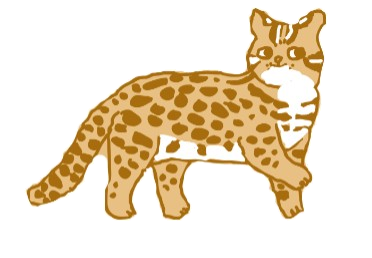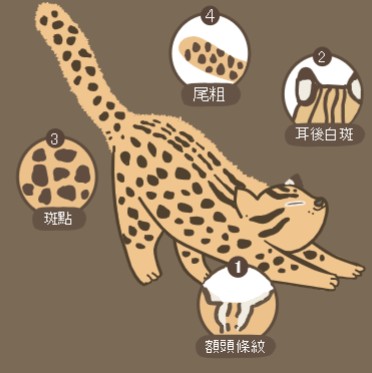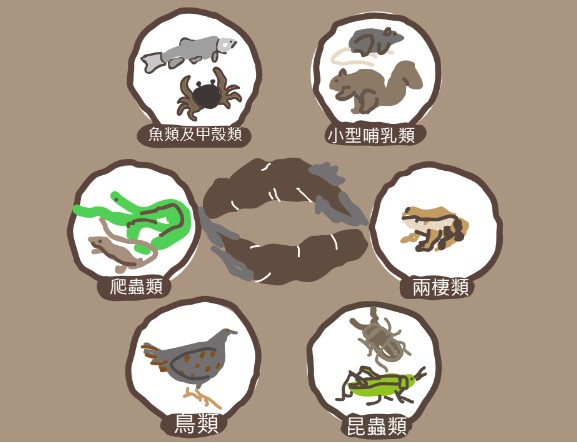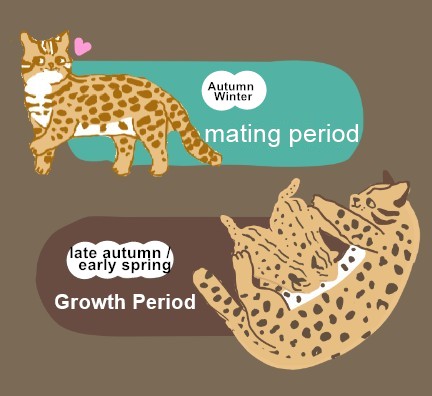Food characteristics:
In the shallow mountain environment dominated by forests, grasslands and farmland, the small mammals (rats, squirrels, hares), birds, amphibians and reptiles, insects, aquatic fish and crustaceans that inhabit it are all the leopard cat's food. , based on dietary analysis, studies show that rats are the main food of leopard cats, followed by birds. In recent years, analysis of the stomach contents of roadkill individuals has revealed records of leopard cats also entering waters to catch fish and crabs.
The leopard cat plays the role of the top predator of the food chain in the shallow mountain ecosystem and is an indicator animal for the health of the ecosystem. |
Food list:
★Small mammals: rats, squirrels, shrews, hares
★Birds: Passeriformes, Galliformes, Columbiformes, Railidae
★Insects: Orthoptera, Coleoptera
★Amphibians: frogs
★Reptiles: lizards, snakes
★Aquatic life: fish and crustaceans |






